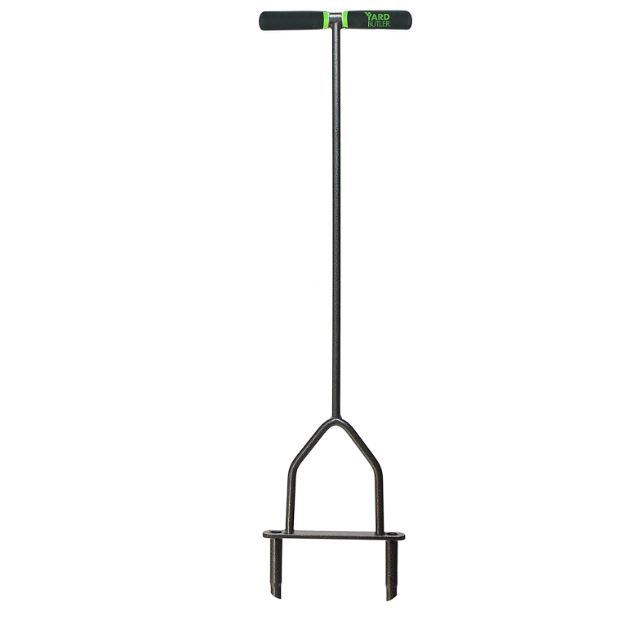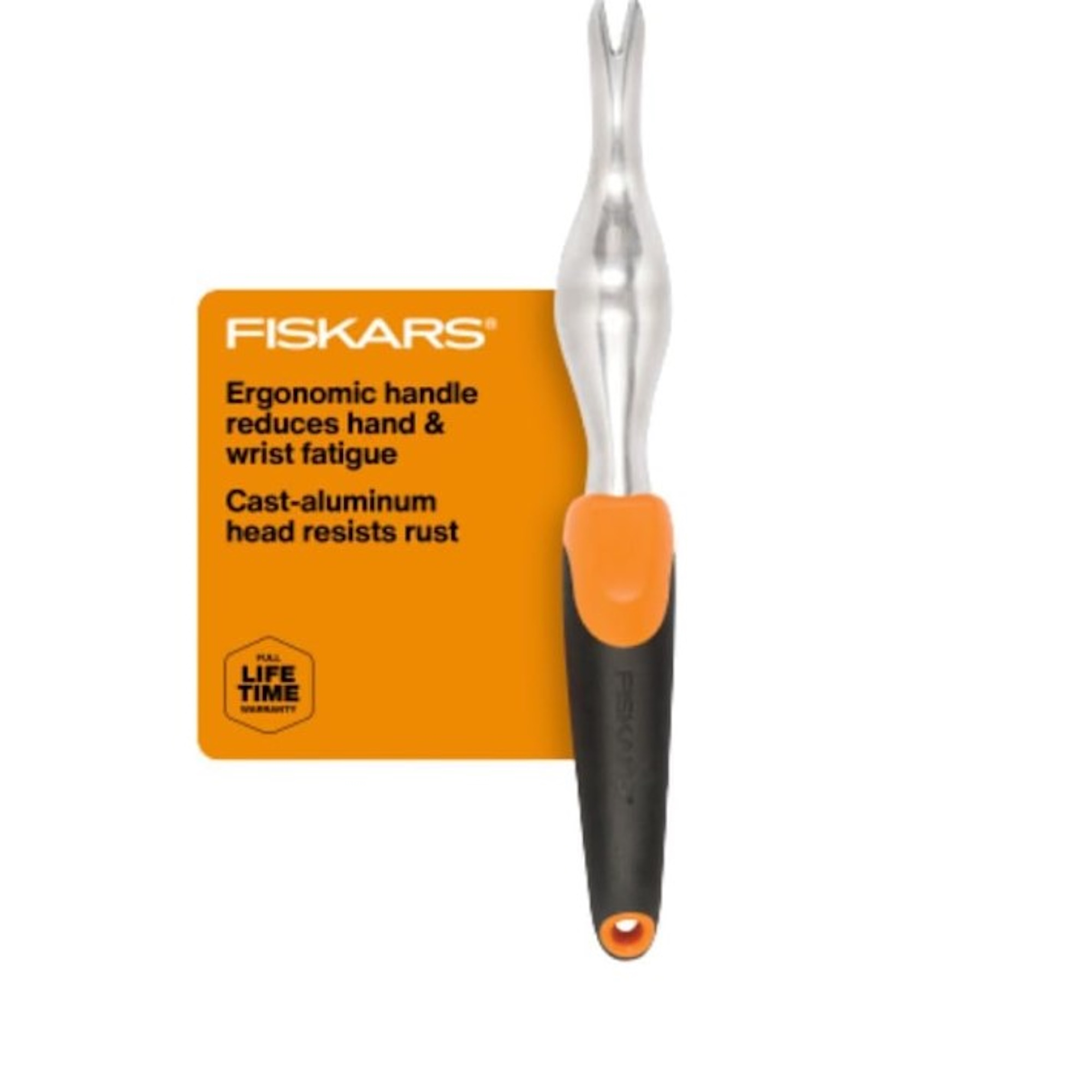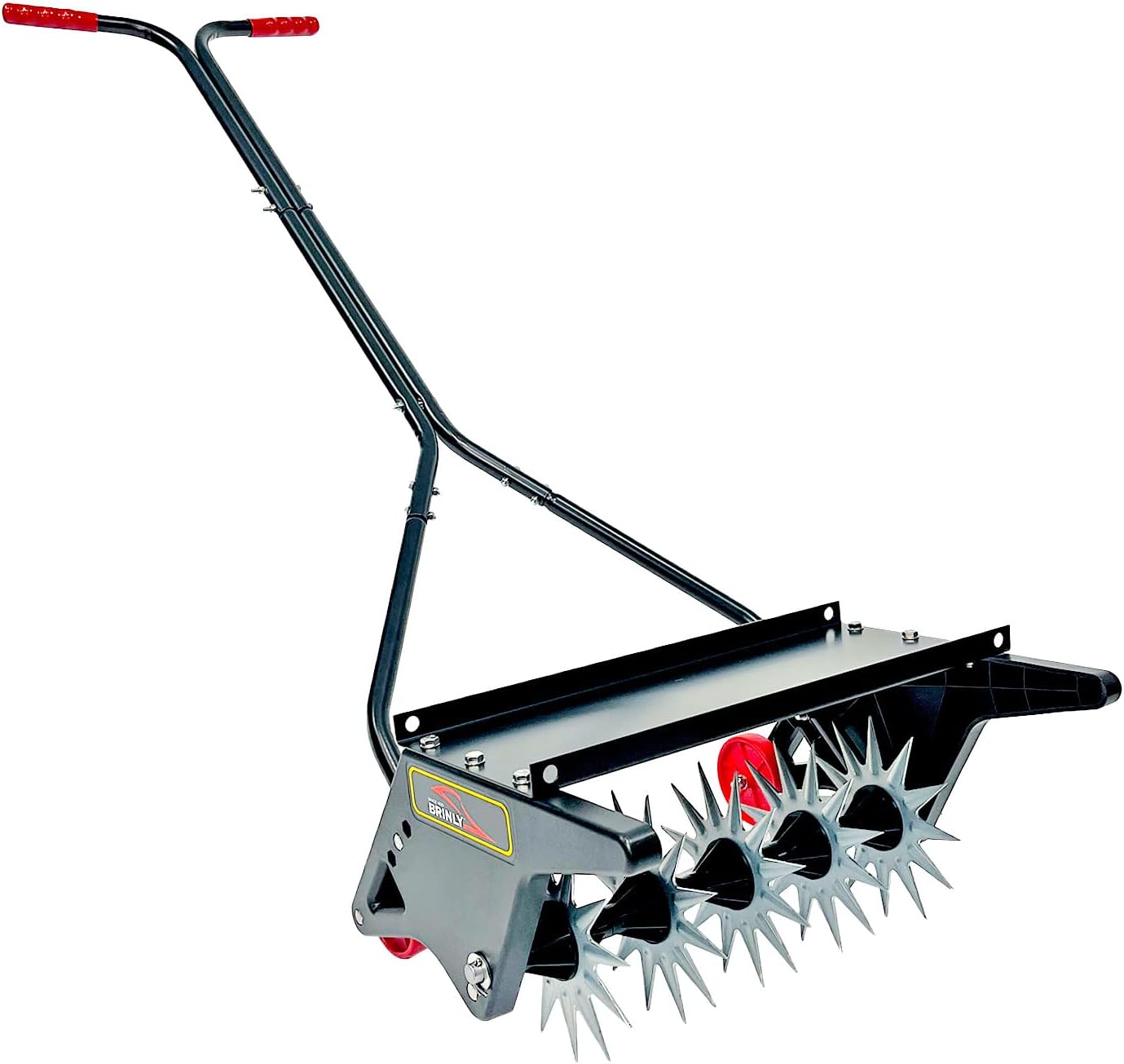How to kill weeds but not grass – 9 expert methods for a greener, healthier lawn
Are weeds ruining your lawn? Discover how to get rid of them without killing your grass
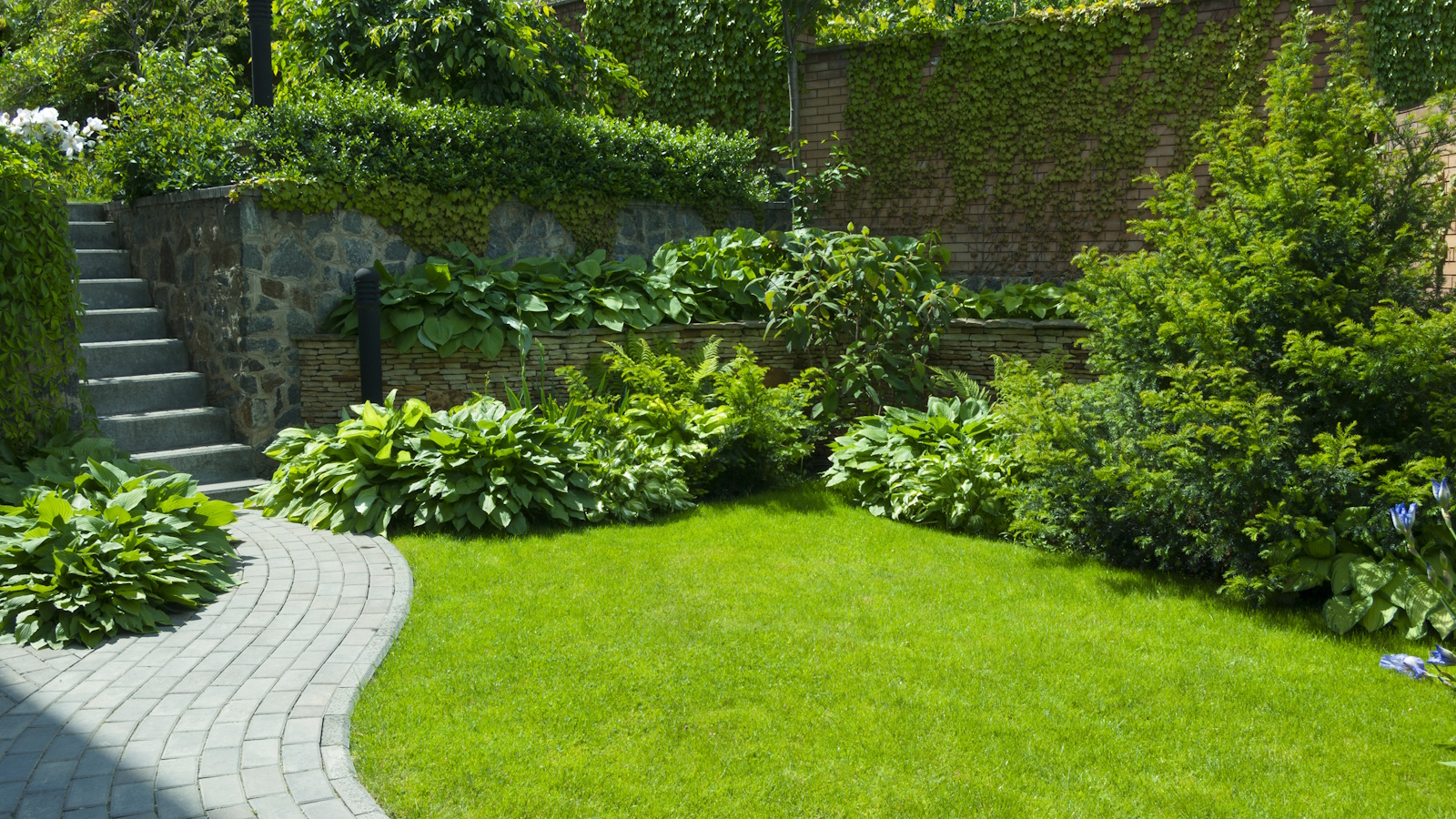

When weeds pop up in your otherwise spotless lawn there can be a brief moment of despair. Most products or DIY home hacks targeted towards getting rid of weeds can also damage grass too, so we gardeners are often left with the question of how to kill weeds but not grass?
Even if your lawn has become riddled with pernicious plants, there is no reason to give up on achieving a perfect patch of grass this summer. Simply by adapting how you get rid of weeds will help you towards a lush lawn in no time, experts say.
We have spoken to gardening professions, who explain six simple ways you can relieve your lawn of weeds without killing off any precious grass.

How to kill weeds but not grass
‘Before you can effectively remove weeds from your lawn, you need to know what types of weeds exist in your garden,’ begins David Angelov, master gardener at Plant Parenthood. While this will depend on where you live and your US hardiness zone, in general, there are 'two main types of weeds: annual and perennial,' David adds. 'Annual weeds grow and die within a single growing season, while perennial weeds come back year after year.’
Annual weeds, such as bittercress, are easier to control as they are shallow-rooted, whereas perennial weeds, such as dandelions, can have deep tap roots, making them trickier to control. Always adjust your approach depending on the weed. For example, annual weeds can probably be removed by hand, whereas perennial weeds might need a weeding tool.
There are many different options to control weeds in your grass, but there are also some to avoid. For example, using salt to kill weeds is too harsh for your grass, while using cardboard for weed control leaves unsightly brown patches. Here, we share some alternative suggestions.

David is an active gardener growing his appreciation for plants every day. He specializes in formal and informal gardens maximizing clients' connection to nature.
1. Dig weeds up by hand
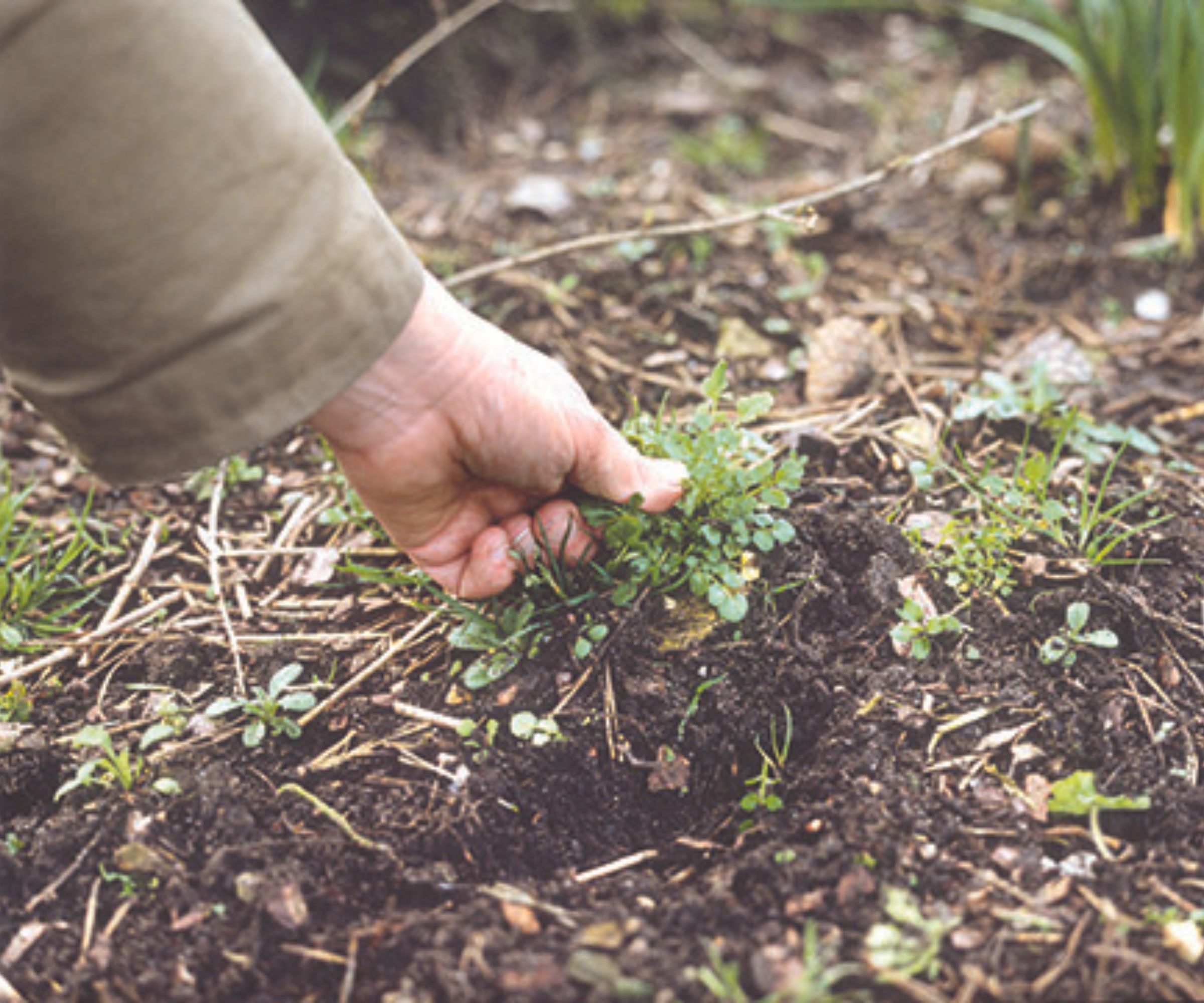
Removing weeds by hand is effective but can be time consuming
If you take pride in your lawn, then you will likely be used to tasks such as aerating a lawn and scarifying a lawn. You may, then, be unsurprised to hear that one of the best ways of removing weeds from grass without damaging it is to do it manually.
Design expertise in your inbox – from inspiring decorating ideas and beautiful celebrity homes to practical gardening advice and shopping round-ups.
'To get weeds out of grass without damaging the turf, one of the simplest and most effective options is to remove them by hand,' says Drew Swainston, a former professional gardener and Content Editor for Homes & Gardens. 'This allows you to focus on each weed one by one and make sure you remove the full weed and its root to prevent it from coming back.'
Removing weeds by hand is a good approach for annual weeds, such as bittercress or oxalis, as they have shallow roots. Using your fingers you can be sure to remove all of the plant and root system. This is not the best approach, however, when it comes to perennial weeds, and doing this by hand can be time-consuming and ineffective.

Gardening piqued Drew's interest and he studied for a Level 3 Horticulture qualification. This opened up the chance to work as a professional gardener for several years. His journey saw him have the fantastic opportunity to work at the world famous arts and crafts garden Hidcote Manor Garden in the UK, and he also spent several years at Hanbury Hall gardens in the West Midlands, UK. During his gardening career he also specialized as a kitchen gardener.
2. Dig up weeds using specialized tools
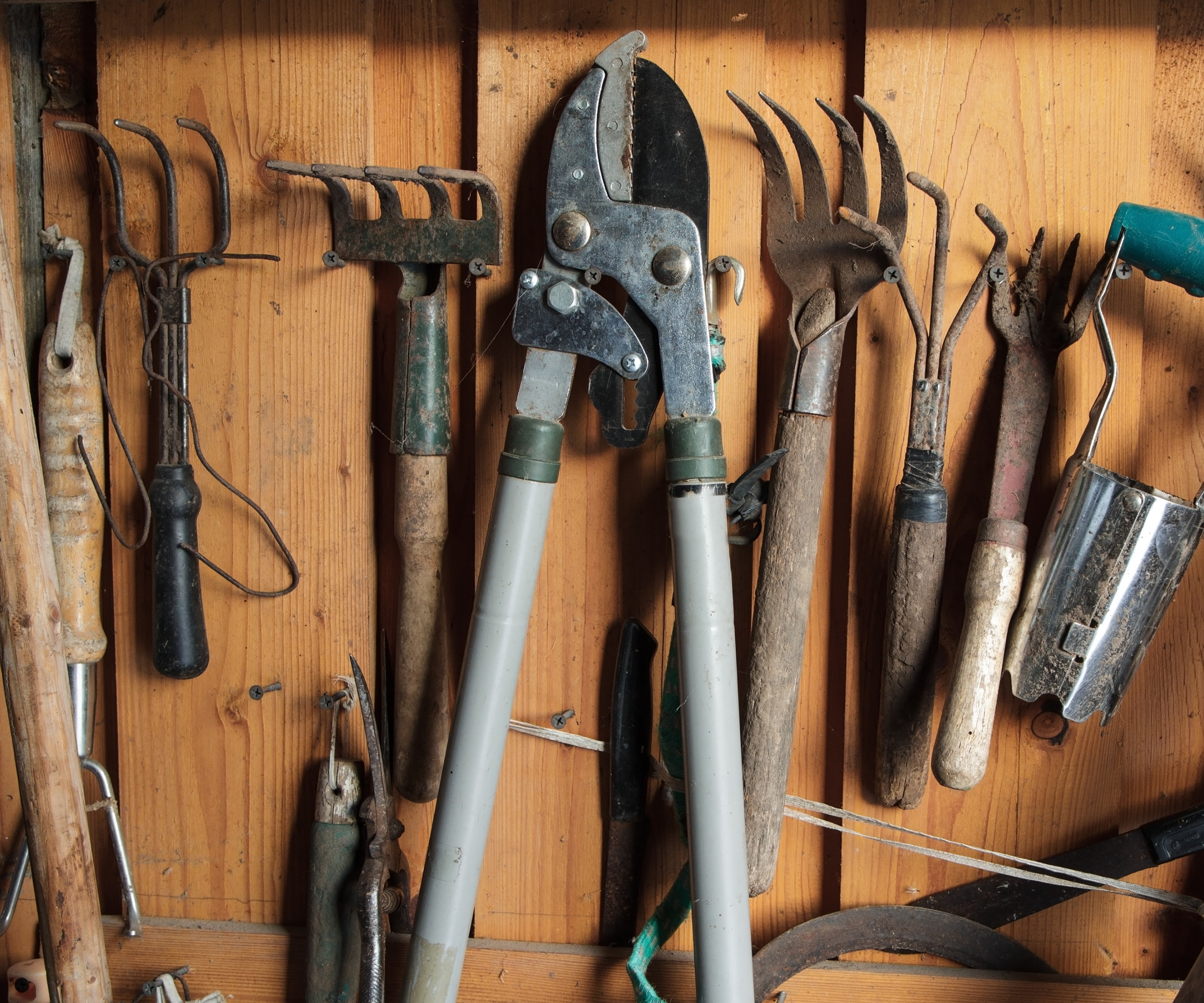
‘When you are dealing with perennial weeds, such as dandelions and plantain, both common lawn weeds, failure to remove the roots will result in it growing back again quickly,' says Drew. 'For this reason, it is a good idea to use specialized tools that will make sure the weed is successfully removed.
'Scour the lawn for weeds, take hold of each one firmly, and pull the whole plant out. If needed, use a garden fork or garden weeder, available at Amazon to get underneath the weed and lever it out of the lawn. The grass will quickly grow to fill any space left by the weed.’
When using weeding tools on your lawn, always take care to cause as little damage as possible. While the lawn will repair itself, a patchy lawn area full of brown holes is not ideal. When I was removing dandelions from my lawns many years ago, the result looked something like a yard full of molehills... so always take your time!
3. Fertilize your lawn

'You may also want to consider fertilizing your lawn to help repair a lawn full of weeds and moss,' says David Angelov of Plant Parenthood.
The main offenders on lawns are daisies, buttercups, clover, and moss. The best way to deal with them organically is to improve the health of your lawn and encourage vigorous grass growth – try feeding, and aerating with a garden fork, such as this model from Amazon. While aerating using a garden fork is hard work (but good exercise!) your lawn will thank you for it. When I tend to do this, I ask for some help from my gardening neighbor. Many hands make the job a lot quicker!
Following this, it is a good idea to scarify your lawn before feeding to improve health. Try using a good quality rake - this model from Amazon is top-rated. Aerating and scarifying will help to improve the overall health and vitality of your lawn.
Lawn weed killers to rid your yard of thick weeds are often combined with feed and can be sprinkled or sprayed over your lawn. Apply to lawns any time between April and September when weeds are actively growing – don't apply more than twice in a year and leave a three-month interval in between.
One final word of caution, however, using grass feed at different times of the year will cause a build-up of chemicals in your soil. For this reason, why not try an organic grass fertilizer, available from Walmart?
4. Reseed your lawn
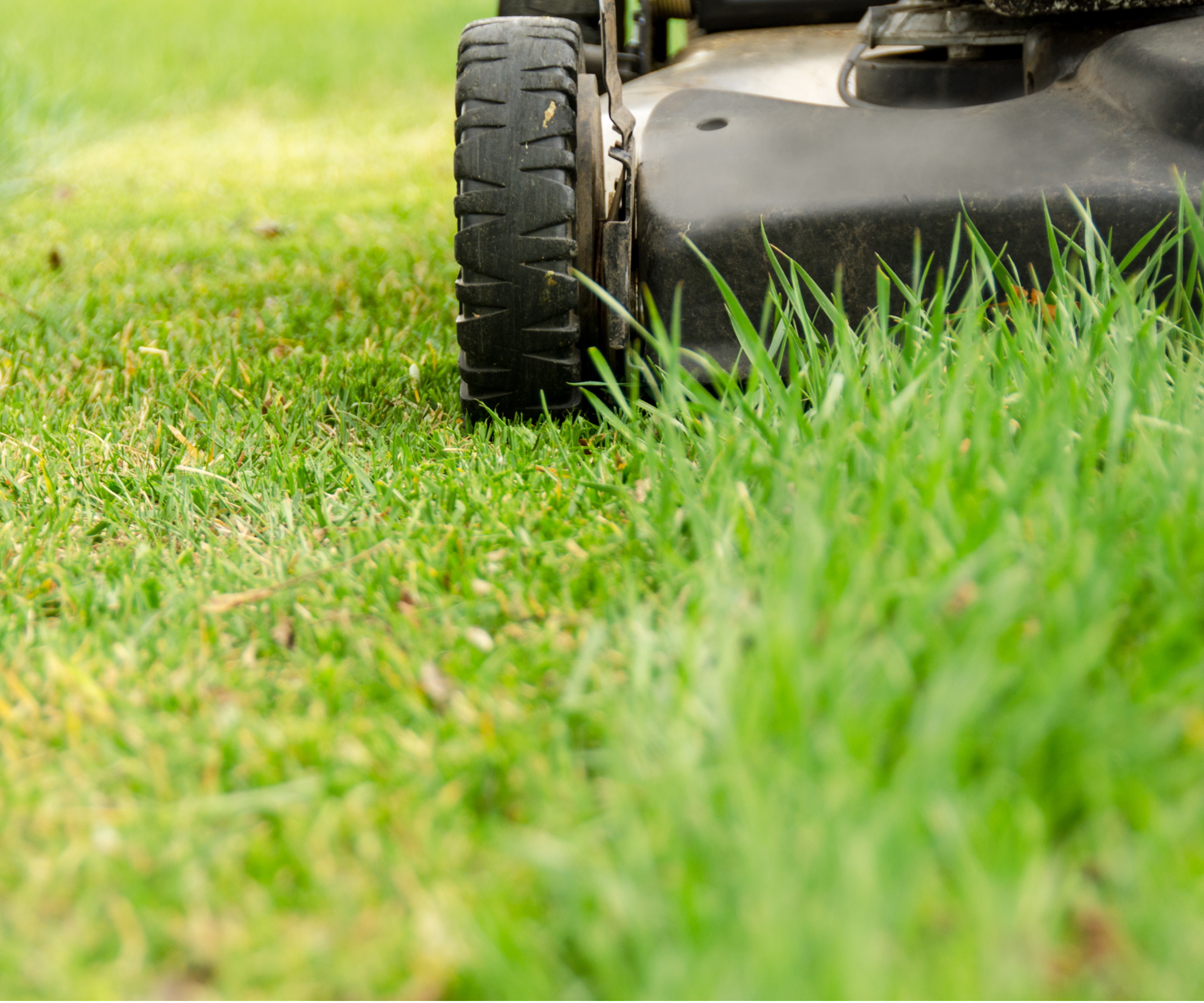
Planting grass seed and overseeding bare areas can help to get your lawn looking right while also limiting opportunities for weeds. ‘A healthy lawn is less likely to have weed problems,’ explains David Angelov of Plant Parenthood.
If there are bare patches on your lawn, weeds can find a way to germinate. For this reason, rapid reseeding can keep your grass growing and keep weeds at bay.
5. Keep on top of mowing
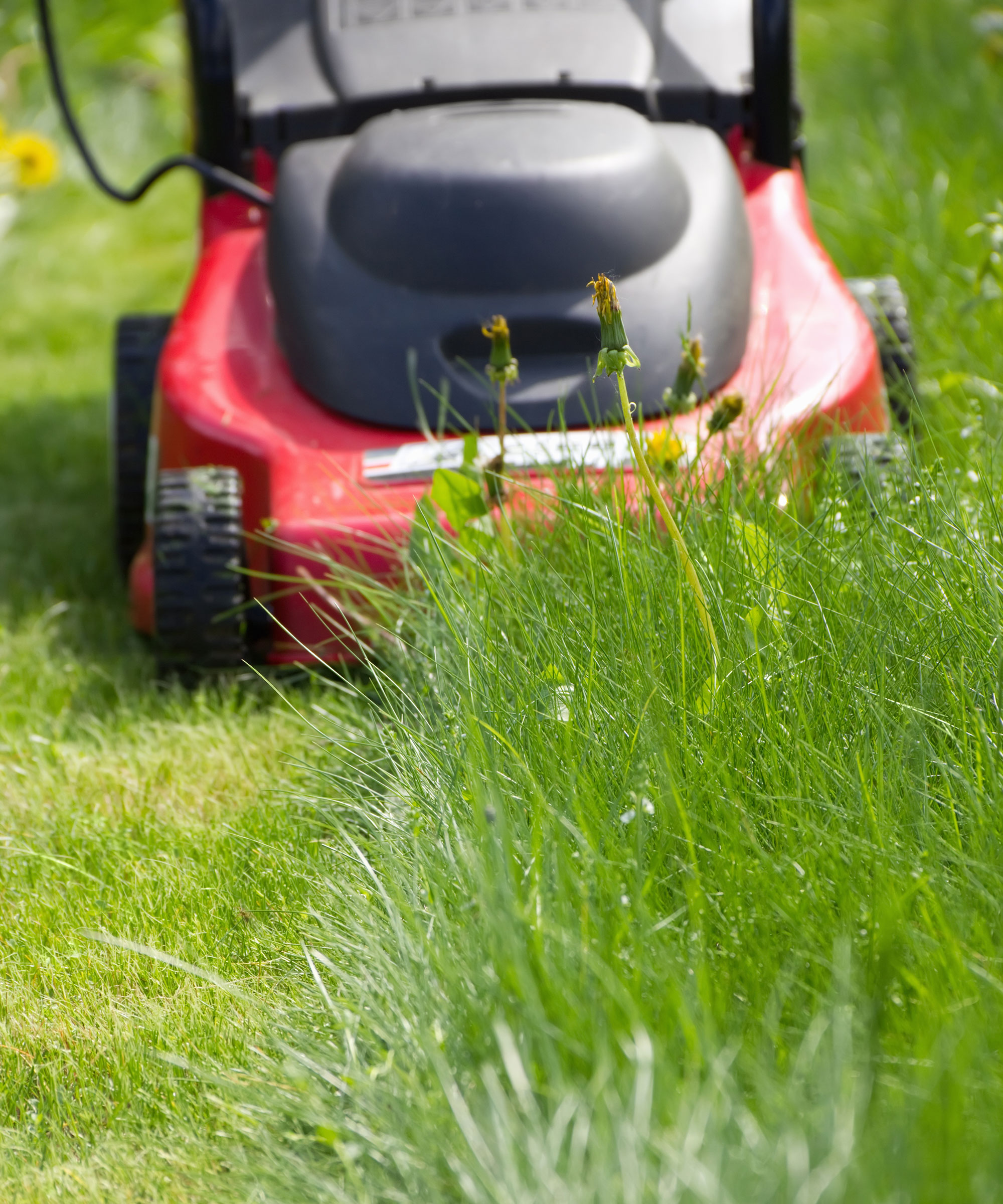
If your grass is being taken over by common lawn weeds such as dandelions, one of the easiest ways to prevent them from growing and spreading is to let your lawn mower do the hard work for you.
‘Make sure to mow your lawn regularly and not cut it too short, as well as watering it deeply, but infrequently,' explains David Angelov of Plant Parenthood. 'A rough level of one to two inches is best.'
If your lawn mower has a mulching option where it spreads the grass clippings straight back onto the lawn to feed the grass, it's important not to use this option when weeds such as dandelions are setting seed in mid to late spring. All you'll succeed in doing is spreading the seeds back into your grass.
A better option would be to keep the bagging attachment on your mower and get rid of the grass clippings that contain the seedheads instead.
6. Dethatch your lawn
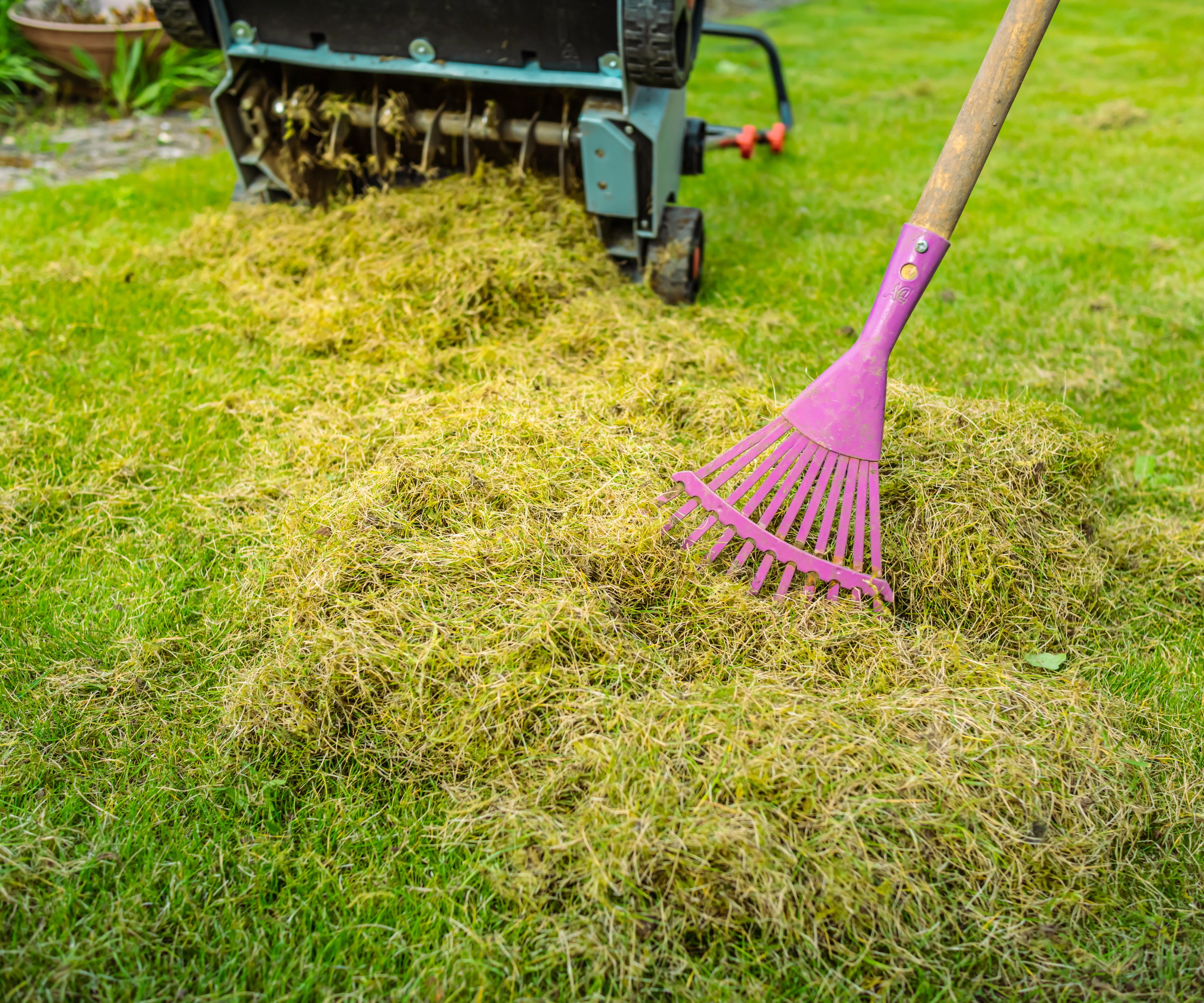
Thatch is a layer of dead grass and debris that accumulates on the soil surface. Without regular maintenance, thatch will cause your lawn to suffer, giving weeds a chance to germinate.
Regular dethatching of your lawn will keep you ahead of the weed game. When considering the question how often should you dethatch a lawn, it is best to reach for your rake in early spring or fall. Dethatching at these times will help to give your lawn a boost and keep weeds at bay.
7. Sprinkle on corn gluten meal
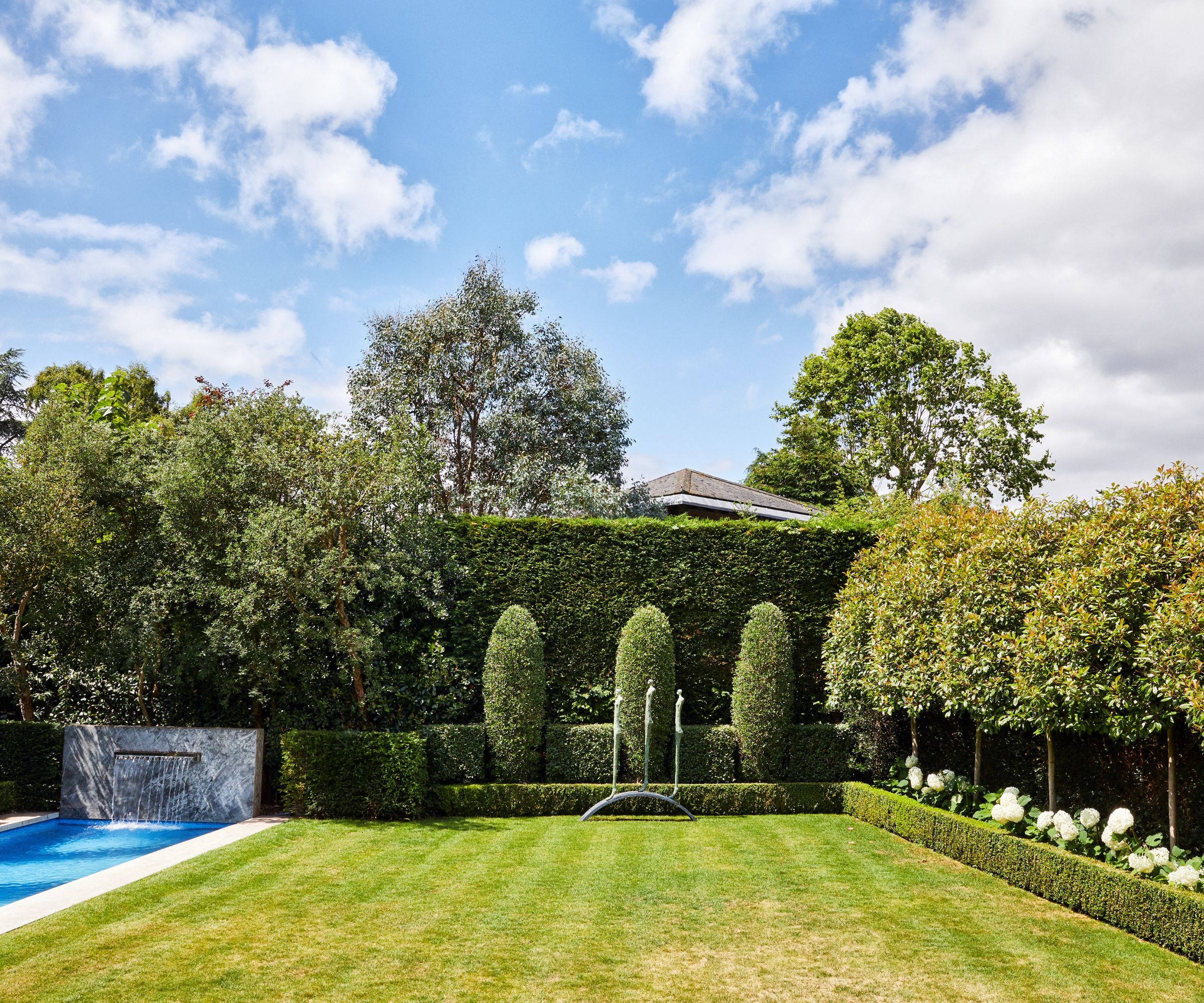
Sprinkling a layer of corn gluten meal over your lawn will benefit the lawn itself (a by-product of corn starch and corn syrup production, it contains protein and nitrogen), and is said to suppress weed germination.
Corn gluten meal is non-toxic to humans and animals, and is most effective if applied in late March to mid-April, a month or so before crabgrass starts to germinate. Sprinkle liberally, water, then let the soil dry out. You can buy Johnathan Green corn gluten meal lawncare products from Walmart.
8. Aerate your lawn
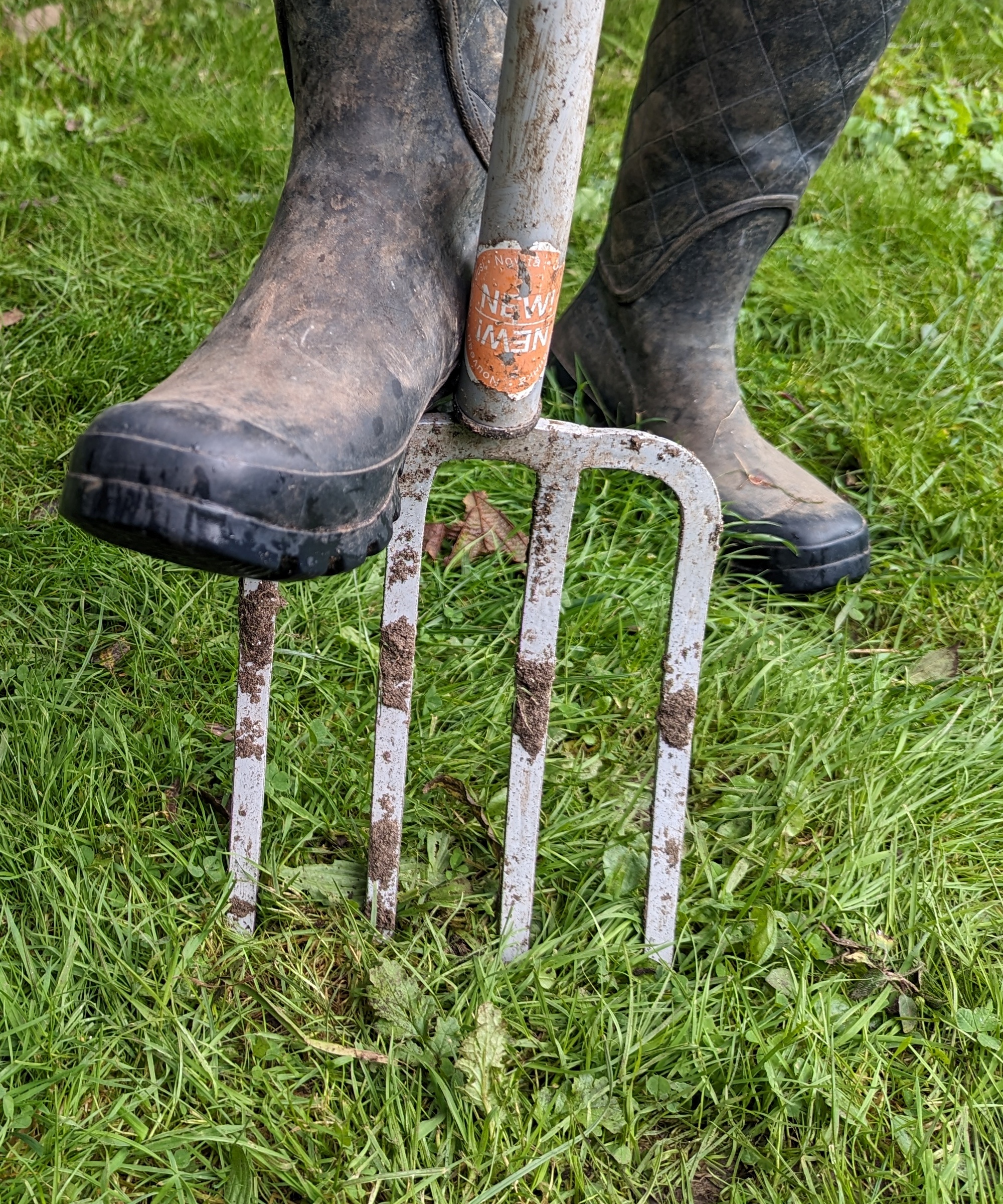
Aerating a lawn promotes healthy grass roots and growth, and decompacts soil, which in turn discourages weed growth. You can aerate with spikes or plugs (see below).
Aerating before fertilizing will give your grass an even better chance of thriving, but if weeds are a problem, consider a fertilizer/weed killer combined. You can use a spreader (see below) to do this last part of the job evenly and efficiently.
9. Use a selective weed killer

Make you sure use a specific lawn weed killer if you don't want to damage your turf
'If you are going to go down the route of using a weed killer to get rid of weeds on your lawn, make sure you opt for a specific lawn weed killer,' says Ruth Hayes, gardening contributing editor on Homes & Gardens. There is a range of weed killers on the market, including several homemade varieties such as weed killers using vinegar and Epsom salts, but many are not suitable for use on otherwise healthy grass.
'Using a general-purpose weed killer will kill the grass as well as any weeds, and ruin your lawn in the process,’ Ruth continues. ‘Weed killer is either combined with a moss killer and lawn food or as a stand-alone product,’ she adds.
‘Selective herbicides are designed to kill specific types of weeds while leaving the surrounding grass unharmed,’ continues David Angelov or Plant Parenthood. ‘Look for a product that is labeled for the specific types of weeds in your lawn and follow the instructions carefully. There are different chemical concentrations for broad-leaf weeds vs narrow-leaf weeds.' A good option is the Ortho weed killer for lawns, available from Walmart.
Always do your research before applying any weed killer, and find a product that is right for you. For example, many specialized weed killers for grass can evaporate within 24-72 hours, and so your yard and soil will be free of weed killers in a matter of days. However, some products can remain in your soil for long periods, and can impact nearby plants, so always speak to an assistant at your local garden store before buying any products.
'It’s important to apply herbicides when the weeds are actively growing and the temperature is not too hot. I recommend doing so in the spring or fall,’ Ruth adds.
In addition, many weed killers can injure pets, so always read the label to assess if your dogs and cats should remain indoors to avoid any dangerous chemicals.

Ruth Hayes is an expert gardener, and formerly gardening editor of Amateur Gardening magazine. She is horticulturally trained, with a qualification from the Royal Horticultural Society, and now regularly shares her expertise with Homes & Gardens.
FAQs
Will vinegar kill weeds but not grass?
Vinegar is a strong acid which will kill the weed, and any plant matter (including grass) around it. When using vinegar to kill weeds, ensure it is not in an area you want to preserve, and that the vinegar only touches the weed you are trying to treat.
Does boiling water kill weeds?
Many gardeners ask can boiling water kill weeds. While boiling water can kill the foliage of the plant or the parts it comes into contact with, it will not kill the roots, leaving the weed to return within a few weeks. As a result, it is not advised to use plain boiling water as a weed killer – especially in areas of your yard surrounded by grass.
Does weed killer affect insects and pollinators?
While weed killers can be a gardener's best friend for controlling invasive plants and unwanted weeds, they can also cause untold damage to local insects, birds, bees and butterflies. In general, weed killers are not wildlife friendly, and most native weeds have a symbiotic relationship with local pollinators, so always use weed killers with care and caution, applying only what is necessary.
What should you do with lawn clippings after applying weedkiller?
It is important to suitably handle lawn clippings after applying weed killer. Never add these clippings to your compost heap, at least for 3 mowings. You can keep a separate pile of these clippings, and add them to your heap after 9-12 months. Alternatively, you can dispose of these clippings in a green waste refuse collection.
Now you are fully armed with all the professional advice on how to kill weeds but not grass, you can discover what needs to be on a spring lawn care checklist and ensure your lawn is lush and healthy all year long. For your borders, consider the best plants to stop weeds, such as lamb's ears, which will fill your beds with lovely blooms and crowd out pesky weeds.

Thomas is a Content Editor within the Gardens Team at Homes and Gardens. He has worked as a professional gardener for both public spaces and private estates, specializing in productive gardening, growing food and flowers. Trained in Horticulture at the Garden Museum, he has written on gardening and garden history for various publications, including The English Garden, Gardens Illustrated, Hortus, The London Gardener and Bloom. He has co-authored a Lonely Planet travel book, The Tree Atlas, due out in 2024.
- Ruth HayesContributing Editor
- Drew SwainstonContent Editor
